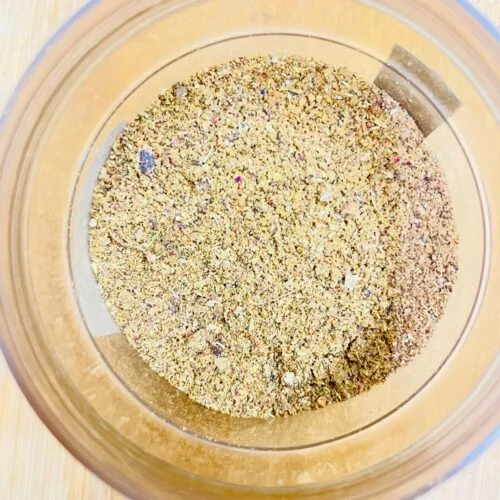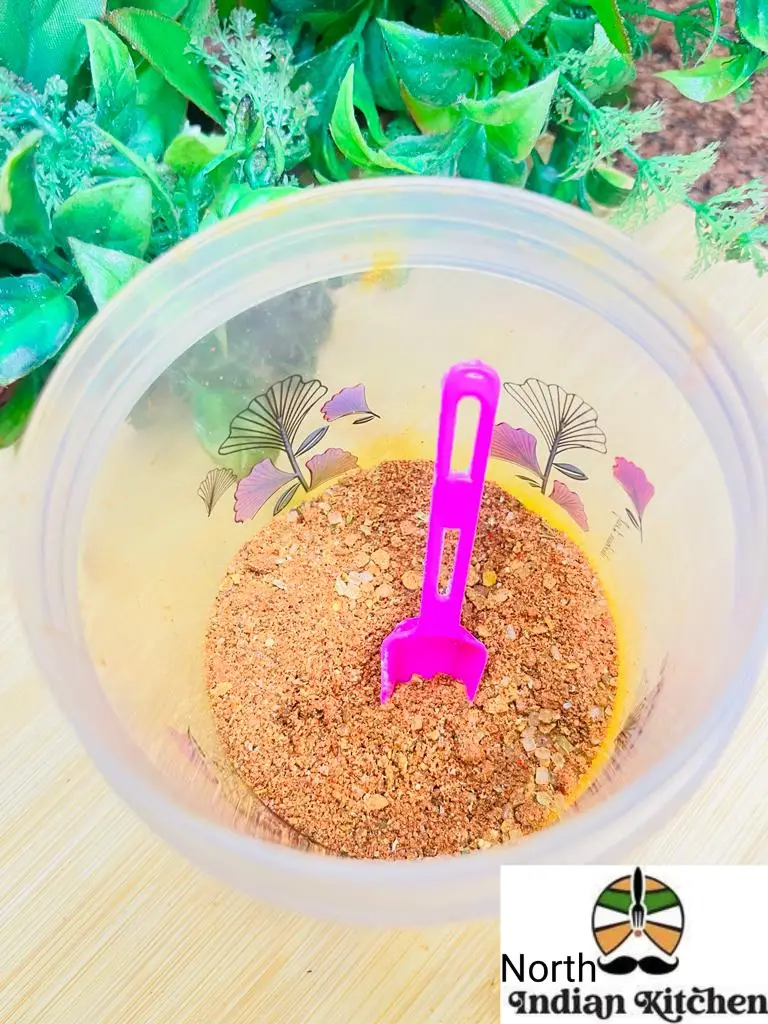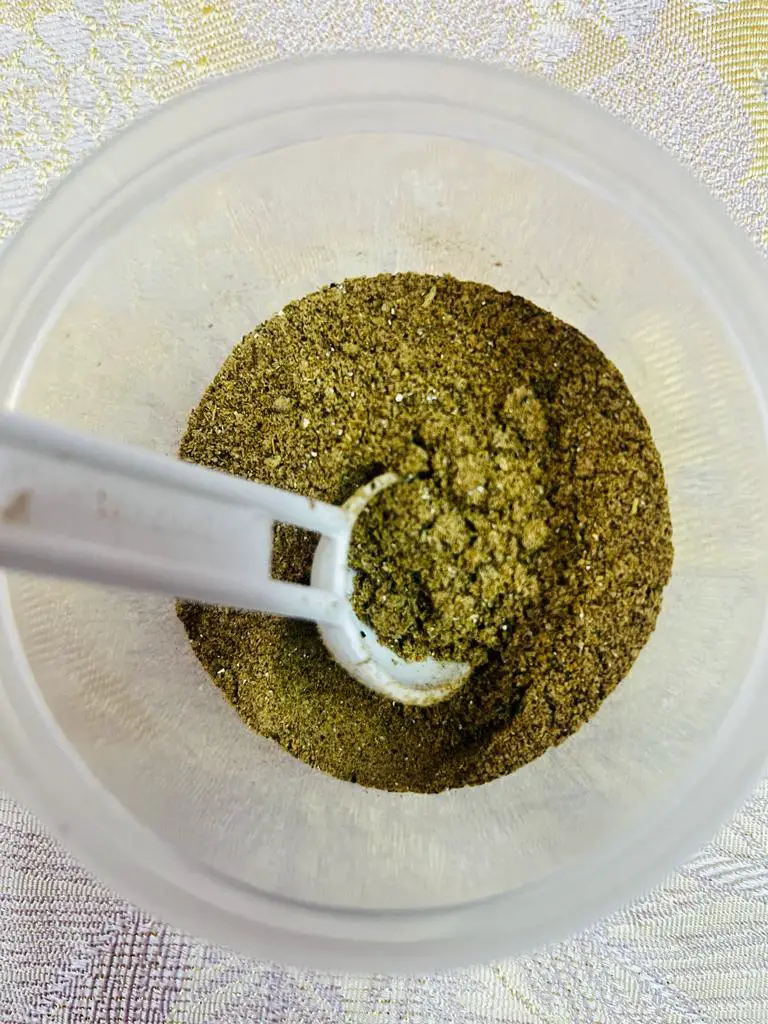Garam Masala Powder Recipe | Homemade Garam Masala Powder | Indian Spice Mix
Garam masala, a popular spice blend originating from the Indian subcontinent, is a key ingredient in many traditional dishes and holds a significant place in the culinary culture of the region. The term “garam” translates to “hot” or “warm” in Hindi, referring to the warming properties and intense flavors this spice blend imparts to dishes. Masala, on the other hand, signifies a mixture of spices.
Together, garam masala represents a harmonious combination of aromatic and flavorful spices, carefully selected and blended to enhance the taste and aroma of various cuisines.
The composition of garam masala can vary greatly, as it is a versatile spice blend with regional variations. However, it typically includes a fusion of spices such as cumin, coriander, cardamom, cinnamon, cloves, and black pepper. These spices, each with its distinct taste and fragrance, come together to create a unique and balanced flavor profile.
The preparation of garam masala involves dry-roasting the whole spices to intensify their flavors before grinding them into a fine powder. This process allows the spices to release their essential oils, resulting in a rich and fragrant blend that elevates the taste of countless dishes.
About Garam Masala
Garam masala is widely used in Indian, Pakistani, and Bangladeshi cuisines, where it serves as a cornerstone spice blend for curries, stews, biryanis, and other flavorful dishes. Its warm and robust flavor complements a wide range of ingredients, whether it be vegetables, meats, lentils, or rice, making it an indispensable component in many traditional recipes.
Beyond its culinary applications, garam masala also offers potential health benefits. Several of its constituent spices are known for their antioxidant, anti-inflammatory, and digestive properties. Additionally, the warming nature of garam masala is believed to aid in digestion and metabolism.
As garam masala continues to gain popularity worldwide, its versatility and distinctive taste make it a sought-after ingredient for both professional chefs and home cooks, providing a delightful fusion of flavors that adds depth and complexity to a variety of dishes.
Why this Garam Masala recipe works
Balanced flavor profile: The combination of spices in garam masala creates a well-balanced flavor profile. The blend includes spices like cumin, coriander, cardamom, cinnamon, cloves, and black pepper, each contributing its unique taste and aroma. This combination ensures that no single spice dominates, resulting in a harmonious and balanced flavor.
Aromatic and fragrant: Dry-roasting the whole spices before grinding them into a powder helps release their essential oils, enhancing the aroma and fragrance of the garam masala. The process intensifies the flavors and ensures that the spices are at their freshest when used.
Versatility: Garam masala is a versatile spice blend that complements a wide range of ingredients and dishes. It can be used in vegetarian and non-vegetarian preparations, curries, stews, rice dishes, and even beverages. Its versatility allows it to enhance the taste of various cuisines and recipes.
Depth and complexity: The combination of spices in garam masala adds depth and complexity to dishes. The flavors of the individual spices meld together, creating a robust and multi-dimensional taste experience. This complexity elevates the overall flavor of the dish, making it more interesting and enjoyable.
Cultural significance: Garam masala is deeply rooted in the culinary traditions of the Indian subcontinent. Its flavors are associated with the rich heritage and diverse cuisines of the region. The recipe has been refined and perfected over generations, making it a tried-and-true spice blend that has stood the test of time.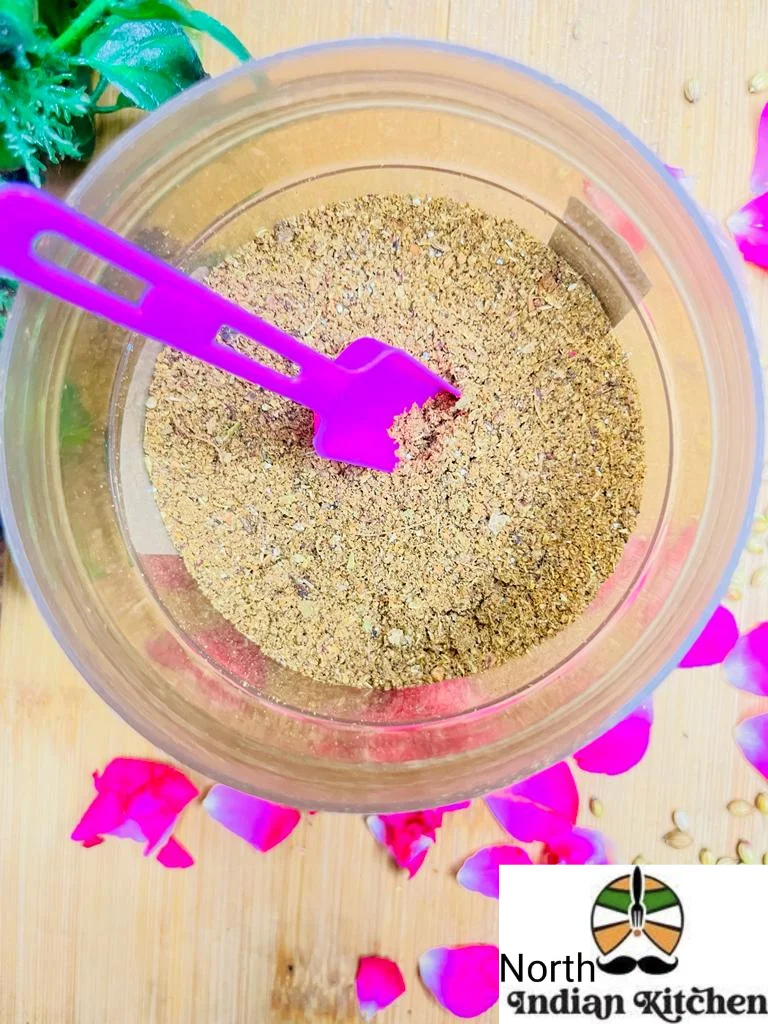
Sun-Drying or Roasting spices
Sun-drying: Sun-drying involves exposing the spices to direct sunlight for an extended period until they are completely dry. This method is often used for whole spices or seeds. The spices are spread out on a clean and dry surface, such as a tray or cloth, and left in the sun for several days. The heat and airflow help remove moisture from the spices, resulting in dried and preserved ingredients. Sun-drying can help retain the natural flavors and aromas of the spices.
Roasting: Roasting spices involves heating them in a dry pan or skillet over low to medium heat. This method is commonly used for whole or ground spices. The spices are dry-roasted until they become fragrant, release their essential oils, and develop a slightly deeper color. Roasting helps enhance the flavors and aromas of the spices by bringing out their natural oils. It can also add a toasty and nutty undertone to the spices.
For garam masala, dry-roasting the spices is a more common method compared to sun-drying. Dry-roasting the spices helps intensify their flavors and aromas, making them more prominent in the final blend. The roasting process also contributes to a deeper and more complex taste profile in the garam masala.
However, in some traditional recipes or specific regional variations, sun-drying may be used for specific spices or ingredients before grinding them into a powder.
Ultimately, whether you choose to sun-dry or dry-roast the spices for your garam masala depends on personal preference, the specific recipe, and the desired flavors you wish to achieve.
Handy tips
Freshness: For the best flavor, try to use freshly ground spices. Whole spices retain their flavor and aroma for longer, so it’s a good idea to grind them just before you need them. If using pre-ground spices, make sure they are fresh and within their expiration date.
Dry-roasting: If you choose to dry-roast the spices, do it over low to medium heat to prevent burning. Keep stirring the spices constantly to ensure even roasting and to avoid any hot spots. Remove them from the heat as soon as they become fragrant, as over-roasting can lead to bitterness.
Storage: Store your garam masala in an airtight container, away from direct sunlight, heat, and moisture. This helps preserve its flavor and potency for a longer period. Consider making smaller batches to ensure freshness and quality.
Adjusting flavors: Garam masala is a versatile blend, and you can adjust the quantities or types of spices to suit your taste preferences. Feel free to experiment and customize the blend to enhance specific flavors or to suit the dish you’re preparing.
Sprinkle as a finishing touch: To fully enjoy the flavors and aromas of garam masala, it’s often best to add it towards the end of cooking or even as a finishing touch. This helps the spices retain their vibrant flavors and prevents them from getting cooked out or becoming dull.
Pairing: Garam masala works well with a variety of dishes, from curries to rice dishes, soups, and even roasted vegetables. Experiment with different recipes to discover the combinations that work best for your taste preferences.
Gradual addition: When using garam masala in a recipe, start with a smaller quantity and adjust according to taste. Its flavors can be quite potent, and a little goes a long way. You can always add more if desired.
How to Make Garam Masala Recipe
- Firstly heat a pan over medium heat. Add 1/4 cup coriander seeds, 1/2 cup cumin seeds, 1/4 cup fennel seeds (saunf) & 2 tablespoons Caraway seeds (shahi jeera).

- Dry-roast them for a few minutes, stirring frequently, until they become fragrant and slightly darker in color. Be careful not to burn them.

- After getting roasted transfer it to a plate to cool down the spices. Kept it aside for further use.

- Now in the same pan append 20 green cardamom, 2 tablespoons cloves, 2 tablespoons black peppercorns, 1 nutmeg (crushed), 10 bay leaf, 2 tablespoons dry ginger powder, 10 cinnamon sticks & 6 black cardamoms.

- Roast it for a while and then transfer it to the same previous plate and let them cool completely.

- Transfer them to a spice grinder or mortar and pestle. Append 3 tablespoons dried rose petals in it.

- Grind the spices into a fine powder. Your Garam Masala is ready to use.

Sieve (optional): If desired, you can pass the ground spice mixture through a sieve to remove any coarse particles and achieve a smoother texture. This step is optional but can result in a more refined garam masala.
- Store in an airtight container: Once the garam masala is ground and sieved (if preferred), transfer it to an airtight container. Store it in a cool, dry place away from sunlight. Properly stored, garam masala can maintain its flavor for several months.
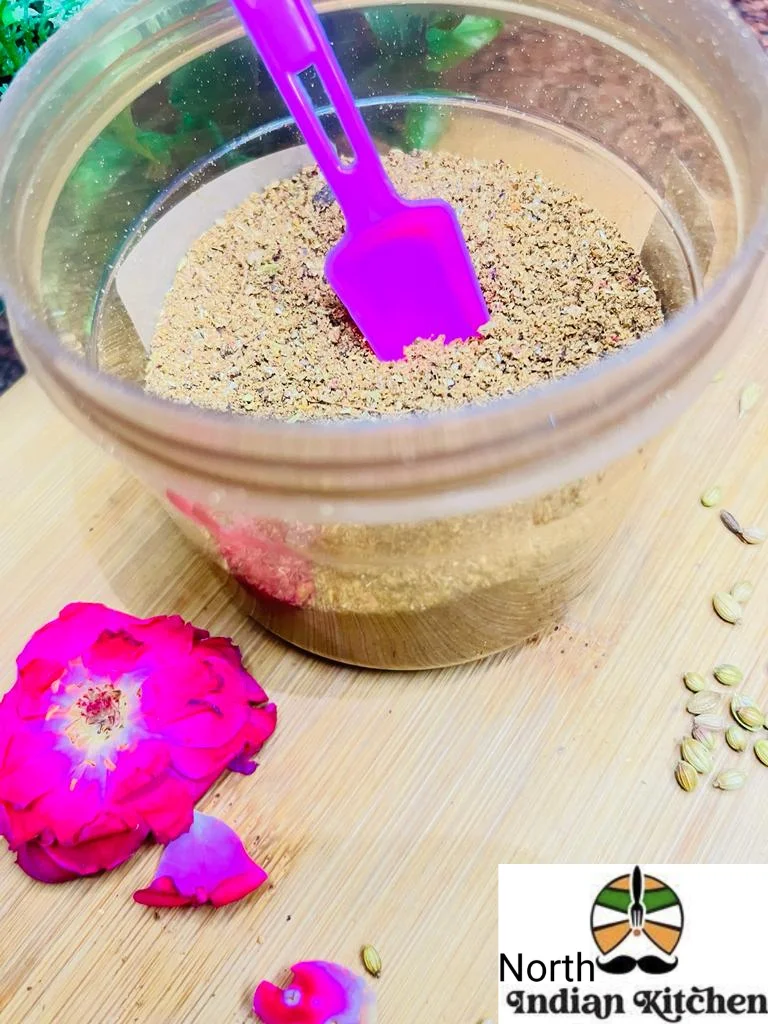
Use in recipes: Garam masala is now ready to be used in various recipes. Add it towards the end of cooking to preserve its flavors or sprinkle it as a finishing touch for an extra aromatic boost.
When and how much to add
Timing: Garam masala is typically added towards the end of the cooking process. This helps to preserve its flavors and aromas, as prolonged cooking can diminish its potency. Add it during the final few minutes of cooking or sprinkle it as a finishing touch just before serving.
Taste and adjust: Start by adding a small amount of garam masala, such as a quarter to half a teaspoon, to the dish. Taste and assess the flavors. If you desire a stronger aroma and more pronounced flavors, gradually add more garam masala, a pinch at a time, until you achieve the desired taste.
Recipe recommendations: Many recipes specify the quantity of garam masala to be used. Follow the recipe guidelines, especially if you’re trying it for the first time. However, remember that personal preferences can vary, so feel free to adjust the quantity based on your taste preferences.
Consider the dish: The amount of garam masala you add may depend on the type of dish you’re preparing. For lighter dishes, such as vegetable stir-fries or lightly seasoned soups, a smaller amount of garam masala may be sufficient to add a subtle flavor. For heartier and spicier dishes, such as rich curries or meat stews, you can be more generous with the quantity to enhance the overall flavor profile.
Personal taste: Ultimately, the amount of garam masala to add is a matter of personal taste. Some individuals prefer a more pronounced garam masala flavor, while others prefer a milder touch. Start with a smaller quantity and gradually increase it until you find the balance that suits your taste preferences.
Garam masala vs Curry powder
Garam Masala:
Composition: Garam masala is typically a blend of ground spices that includes warm and aromatic spices like cumin, coriander, cardamom, cinnamon, cloves, and black pepper. The specific combination of spices can vary, and regional variations may include additional ingredients like nutmeg, mace, or star anise.
Flavor Profile: Garam masala has a rich, warm, and complex flavor profile with hints of sweetness and earthiness. It adds depth and warmth to dishes and is often used as a finishing touch to preserve its aromatic qualities.
Usage: Garam masala is commonly used in Indian cuisine, particularly in North Indian and Punjabi dishes. It is added towards the end of cooking or as a garnish to enhance the overall flavors of curries, lentils, rice dishes, and other savory preparations.
Curry Powder:
Composition: Curry powder is a Western adaptation of Indian spice blends. It typically combines several spices, including turmeric, coriander, cumin, fenugreek, ginger, and red chili powder. The specific ingredients and proportions can vary, depending on the brand or regional variations.
Flavor Profile: Curry powder tends to have a more mellow and balanced flavor compared to garam masala. It offers a combination of earthy, slightly sweet, and mild spiciness. The flavor of curry powder can be influenced by the dominant spices used in the blend.
Usage: Curry powder is commonly used in Western-style curry dishes, where it serves as a base flavor for curries. It is often used to make creamy or tomato-based curries, soups, and stews. Curry powder can be added during cooking to infuse the dish with its flavors or used as a seasoning blend for marinades or rubs.
Two Types of Garam Masala
Pakka Garam Masala
“Pakka garam masala” refers to a type of garam masala that is often associated with the cuisine of North India, particularly in Punjabi and Mughlai cooking. The term “pakka” translates to “cooked” or “matured” in Hindi.
Pakka garam masala is made by dry roasting whole spices and then grinding them into a fine powder. The spices commonly used in pakka garam masala include coriander seeds, cumin seeds, cardamom pods, cinnamon sticks, cloves, and black peppercorns. Sometimes, additional spices like nutmeg, mace, or star anise may also be included.
The process of dry roasting the whole spices helps to release and enhance their flavors, making the resulting garam masala more aromatic and flavorful. Roasting also helps to remove any moisture from the spices, allowing them to be ground into a fine powder that can be easily incorporated into dishes.
Pakka garam masala is often added towards the end of cooking or as a finishing touch to dishes. It imparts a warm, aromatic, and slightly sweet flavor profile to curries, stews, lentils, rice dishes, and other savory preparations. The matured flavors of pakka garam masala add depth and complexity to the dish, enhancing the overall taste experience.
It’s worth noting that while pakka garam masala is associated with North Indian cuisine, there can still be variations in the specific blend and proportions of spices used, as recipes can differ from one household or region to another.
Kaccha Garam Masala
Unlike the traditional method of roasting the spices before grinding, kaccha garam masala involves grinding the raw or unroasted spices directly into a powder. This method is said to retain the fresher and more vibrant flavors of the spices.
The specific composition of kaccha garam masala can vary depending on personal preferences and regional variations. However, some common spices used in kaccha garam masala may include coriander seeds, cumin seeds, cardamom, cinnamon, cloves, and black peppercorns. The proportions and selection of spices can be adjusted based on individual taste preferences and the desired flavor profile.
Kaccha garam masala is often added during the cooking process, allowing the flavors to infuse into the dish. It can be used in a variety of Indian dishes, such as curries, gravies, soups, or even marinades.
It’s important to note that while kaccha garam masala may be used in some regions or households, it is not as widely recognized or commonly used as roasted garam masala. The roasting process is typically preferred as it enhances the flavors and aromas of the spices. Nonetheless, experimenting with kaccha garam masala can offer a unique flavor experience for those who prefer the brighter and fresher taste of unroasted spices.
Expert Tips
Quality of spices: To achieve the best flavor, use fresh, high-quality spices when making or purchasing garam masala. Check the expiration dates on store-bought blends and ensure that the spices are aromatic and haven’t lost their potency.
Toasting whole spices: If you’re making your own garam masala, consider toasting the whole spices before grinding them. Dry roast the spices in a pan over medium heat until they become fragrant. This process enhances the flavors and aromas of the spices, adding depth to the final blend.
Grinding and storing: Grind the toasted spices or store-bought garam masala in small batches to maintain freshness. It’s best to use a spice grinder or mortar and pestle to ensure a fine and consistent texture. Store the garam masala in an airtight container in a cool, dark place to preserve its flavors for longer.
Adjust to taste: Garam masala recipes can serve as a starting point, but feel free to adjust the proportions of spices according to your preferences. Some may prefer a stronger cumin or cardamom flavor, while others may like a bit more heat from black peppercorns. Experiment and find the balance that suits your taste.
Timing of addition: Garam masala is typically added towards the end of cooking or as a finishing touch to retain its aromatic flavors. This prevents the spices from being overcooked and ensures they impart their essence to the dish without losing their potency.
Pairing with other spices: Garam masala blends well with other spices commonly used in Indian cuisine, such as turmeric, chili powder, coriander powder, and cumin powder. Consider incorporating these complementary spices to create more complex and well-rounded flavors in your dishes.
Start with small quantities: If you’re new to using garam masala or trying a new blend, start with a small amount and gradually increase according to your taste preferences. It’s easier to add more if needed, but difficult to reduce the intensity if you’ve added too much.
FAQs
Q. Is garam masala spicy?
A. Garam masala is not typically spicy in terms of heat. It is a blend of warm and aromatic spices that add depth and flavor to dishes. However, depending on the specific blend or the addition of certain spices, it can have a mild to moderate level of heat.
Q. Can garam masala be substituted with curry powder?
A. While both garam masala and curry powder are spice blends used in Indian cuisine, they have different flavor profiles. Garam masala is more aromatic and warming, while curry powder tends to have a milder and slightly sweeter taste. While you can use curry powder as a substitute in a pinch, it won’t provide the exact flavor profile of garam masala.
Q. Can garam masala be used in non-Indian dishes?
A. Garam masala is primarily used in Indian cuisine, but its flavors can complement other dishes as well. It can add a warm and aromatic touch to soups, stews, roasted vegetables, marinades, and even some desserts. Experimenting with garam masala in non-Indian recipes can offer a unique twist to the flavors.
Q. How long does garam masala last?
A. The shelf life of garam masala can vary depending on the quality of the spices used and how it is stored. Typically, homemade garam masala can retain its flavor for 6 to 12 months when stored in an airtight container in a cool, dark place. Store-bought garam masala usually has an expiration date indicated on the packaging, and it is best to use it within that timeframe for optimal flavor.
Q. Can I adjust the spice levels in garam masala?
A. Yes, you can adjust the spice levels in garam masala according to your taste preferences. Feel free to modify the proportions of the spices or experiment with different spice combinations to achieve the desired flavor balance. It’s always a good idea to start with a smaller quantity of a particular spice and gradually increase it until you reach the desired level of heat and flavor.
If you like this recipe then try our Other Masala Recipes
Please be sure to rate this recipe or leave a comment below if you have made it. For more vegetarian & non – vegetarian inspirations, Sign Up for my emails or follow me on Instagram, Youtube, Facebook, Twitter or Pinterest.
Garam Masala Recipe Card
Equipments
Ingredients
- ½ cup Cumin seeds -63 grams
- ¼ cup Coriander seeds (dhania) -18 grams
- ¼ cup Fennel seeds (saunf) -24 grams
- 2 tablespoons Caraway seeds (shahi jeera) -9 grams
- 10 Cinnamon sticks (dalchini)- each of about 2-3 inches
- 2 tablespoons Cloves -12 grams
- 20 Green Cardamoms -4 grams
- 6 Black Cardamoms- 4 grams
- 1 Nutmeg (jaiphal)
- 10 Bay leaf (tej patta) -2 grams
- 2 tablespoons Dry Ginger powder (saunth), optional
- 2 tablespoons Black Peppercorn -20 grams
- 3 tablespoons Rose petals (dried), optional
Instructions
- Firstly heat a pan over medium heat. Add 1/4 cup coriander seeds, 1/2 cup cumin seeds, 1/4 cup fennel seeds (saunf) & 2 tablespoons Caraway seeds (shahi jeera).2. Dry-roast them for a few minutes, stirring frequently, until they become fragrant and slightly darker in color. Be careful not to burn them.3. After getting roasted transfer it to a plate to cool down the spices. Kept it aside for further use.4. Now in the same pan append 20 green cardamom, 2 tablespoons cloves, 2 tablespoons black peppercorns, 1 nutmeg (crushed), 10 bay leaf,2 tablespoons dry ginger powder, 10 cinnamon sticks & 6 black cardamoms.5. Roast it for a while and then transfer it to the same previous plate and let them cool completely.6. Transfer them to a spice grinder or mortar and pestle. Append 3 tablespoons dried rose petals in it.7. Grind the spices into a fine powder. Your Garam Masala is ready to use
Video
Notes
- To enhance the aromatic properties of garam masala, you can add it to hot oil or ghee at the beginning of the cooking process. This allows the spices to release their flavors and infuse into the dish.
- If you're making your own blend, consider buying whole spices and grinding them as needed for the freshest flavors. Store-bought garam masala should be checked for freshness and used within its expiration date.


